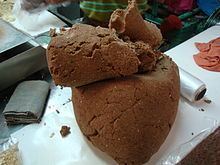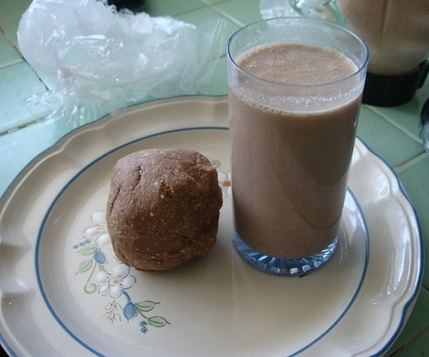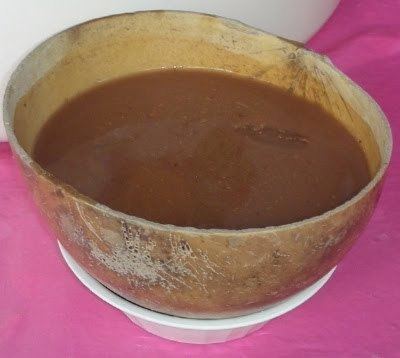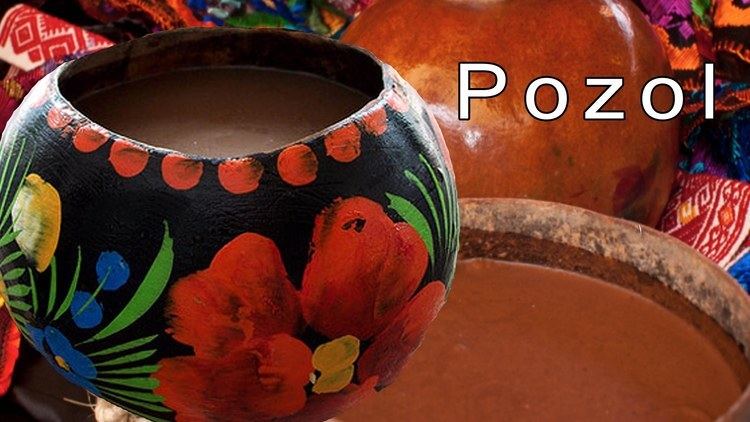 | ||
Similar Tascalate, Pinole, Chipilín, Tejuino, Atole | ||
Pozol bebida tradicional la ruta del sabor chiapa de corzo chiapas
Pozol (from the nahuatl "pozolli") is the name of both fermented corn dough and the drink made from it, which has its origins in Pre-Columbian Mexico. Other ingredients besides corn dough and water, such as cocoa, may be added to it. The drink is consumed in the south of Mexico in the states of Chiapas and Tabasco. It is a thirst-quencher which has also been used to fight diseases. It has also aided indigenous peoples of the Americas as sustenance on long trips across the jungles.
Contents
- Pozol bebida tradicional la ruta del sabor chiapa de corzo chiapas
- Pozol
- History
- Preparation
- Pozol in Tabasco
- Pozol in Chiapas
- References
Pozol
History

Since ancient times, the Maya-Chontales from Tabasco prepared this drink with boiled cornmeal, cocoa, and grains. Initially, it was called pochotl (from nahuatl, "pozolli", meaning "sparkling"), but after the arrival of the Spanish in Tabasco in 1519, the name changed to the now-familiar "pozol". Pozol was traditionally made by women by fermenting corn dough, which, when dissolved in water, is eaten raw by various ethnic groups of southern and southeastern Mexico. In Chiapas, this drink was prepared for Mayas, Zoques and Chiapanecas.

Pozol is drunk throughout the day, especially by the lower classes, though it is generally used throughout all classes. In pre-Hispanic times, it was drunk mixed with cocoa, unsweetened; since the twentieth century, sugar and ice are added throughout Chiapas.

Because it does not go bad easily, pozol cornballs have been used by various groups as provisions for their long journeys through the jungle. Besides its use as food, the drink has also been used as medicine and for religious ceremonies. In the past pozol balls were used by the Maya as a poultice, and to prevent or treat skin infections and wounds.

Pozol also had a ceremonial importance, since pre-Hispanic times, it was used as an important component of offerings in various Maya festivities. These festivities were related to the cultivation and harvest of corn. Pozol is still used today by the Maya of the Yucatán Peninsula (who call it K'eyem) as part of their harvest rites.
Preparation

Pozol is made by fermenting corn dough, which is then rolled into balls or loaves and may be preserved in banana leaves. The drink, which is a "sort of whitish porridge," is made by soaking the dough in water. Common extra ingredients included chili pepper, honey, and sugar.
White pozol is made from dough mixed with sweetened or unsweetened water. It can be sweetened with sugar or not. Some people from Tuxtla Gutierrez, Chiapas also prefer to prepare sourdough. Sour Pozol is more common in Tuxtla Gutierrez. Sour dough is fermented for three days and can be taken with or without sugar. It can be consumed cold with a pinch of salt and a slice of chili (or swallowing salt mixed with chili powder). Currently, the Lacandones use pozol mixed with honey to lower fever and control diarrhea and other intestinal disorders, in a similar way as other people use drugs or eat foods containing yeast or lactobacillus.
Pozol in Tabasco
In the State of Tabasco, pozol is also a traditional drink. During the Prehispanic era, pozol was a highly appreciated beverage due to its resistance qualities, this was believed mainly in Tabasco.
In 1579 the government of Tabasco declared that pozol was a typical “tabasqueña” beverage. In the declaration, it was said that: "We're in the habit, especially Chontal indians of not eating but of only drinking water, and if they ate, they ate very little and drank a drink that is made of its currency, which is cacao, which is a thick concoction called: pozol".
Pozol has been widely consumed in Tabasco since pre-Hispanic times. Europeans described pozol as a beverage that allowed the indigenous people to resist the heat of this tropical zone.
In Tabasco there are four different types of pozol: white pozol, black pozol, Cacao Special pozol, and sour pozol. In the little towns and villages it is customary to drink white pozol without sugar, and instead using salt and fresh Chile amashito, or with candied papaya called "Oreja de mico".
Pozol, just as the “Pocho” dance, the “caballito blanco”, is very representative of the culture and variety in the State of Tabasco.
In Villahermosa, and all Tabasco, it is common to find many places to try pozol. There is a saying: "A visitor who arrives to Tabasco and drinks pozol and likes it, takes up residence in Tabasco".
Pozol in Chiapas
For some of the "indegenas", Pozol represents a semi-ritual to their gods. Since ancient times, the Mayas, Zoques and Chiapanecas from this state, as well as the ones from Tabasco, made this beverage using cooked corn and cacao.
